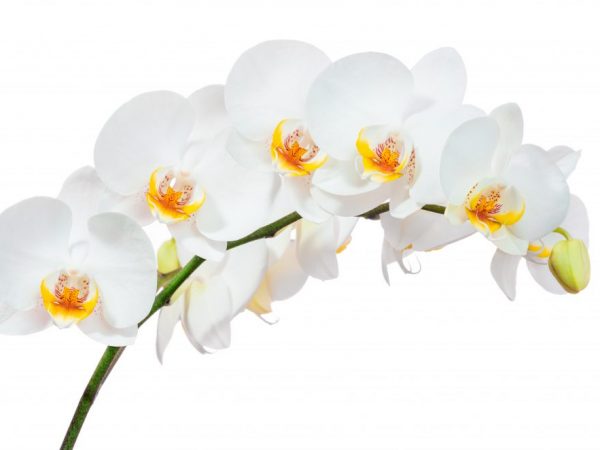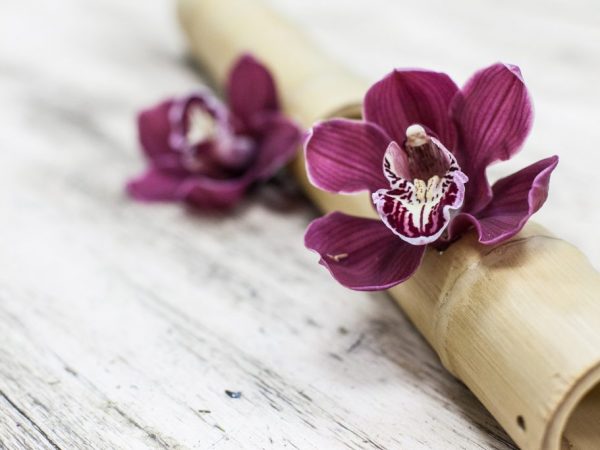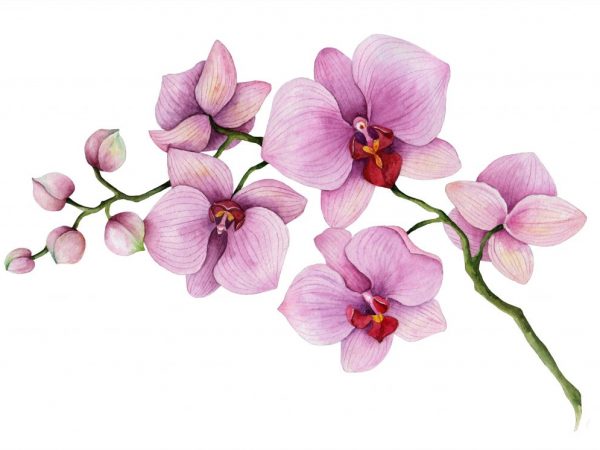Orchid flowering period at home
Phalaenopsis conquered the hearts of many flower growers, this is a flower of unique beauty, with proper care it blooms extensively and for a long time. The flowering time of the orchid is about 2 months, it can be repeated 2-3 times a year.

Orchid flowering period at home
Blooming at home
For flowering, the orchid requires special conditions of detention. Each variety has its own requirements for home care and its own flowering time.
A flower younger than 1.5 years does not bloom, it lacks the strength to release a peduncle. By 1.5-2 years, the plant should have formed at least 6 leaves.
Orchid flowering time is 6 months. The life of flowers is no more than 3 months, and they are replaced during the flowering process. The plant does not have a clearly defined dormant period and seasonality.
The necessary conditions
Orchids bloom from 3 to 6 months a year. Factors influencing the growing season and the number of flowers:
- temperature regime;
- lighting;
- watering and moisture;
- flower age;
- root system care;
- stress from transplant or illness.
The vegetation of flowers often takes place in the summer, the peduncle climbs in the fall, and the orchid blooms by winter. It happens that the plant produces a second peduncle in the spring, and it blooms in the summer.
Temperature and lighting
Orchids should bloom several times a year at a temperature of 25 ° C during the day and up to 18 ° C at night.
In the summer, take the plant pot out onto the balcony, do not keep it in a stuffy box. Protect phalaenopsis from direct sunlight and avoid drafts. Orchids bloom only if there is a temperature difference.
The flower is comfortable on the eastern windowsill in the warm season, and on the south in the cold. In the cold season, the daylight hours are short, so in the evening they use a fluorescent lamp, it is worth highlighting the very top, otherwise it will not form and bloom.
Substrate selection and root care
Suitable soil for orchids, which contains bark and moss. Before planting, the substrate is soaked for a day, then washed and allowed to drain excess water.
The roots of the flower are actively involved in photosynthesis and need light, so a transparent plastic pot with drainage holes is suitable for better air exchange and water drainage.
Trim dry and rotten roots in time using a sterile pruning shear. Always treat the cut points with an antiseptic or crushed activated carbon.

We fertilize the soil regularly
Before transplanting, carefully remove the flower and clean it from the substrate. Place the plant in a pot, cover the roots with substrate and bark, and put moss on top, it will retain moisture in the soil. The transplant is carried out only in the dormant stage or immediately after flowering. The orchid will take a little time to adapt.
It is important to fertilize the soil in a timely manner. Any flower shop sells a mixture that is suitable for orchids.It is used according to the instructions. The flower is fertilized during the dormant period, it is then that the plant accumulates strength for the next flowering.
Watering and humidity
Watering is necessary when the substrate dries. Use soft, settled water at room temperature.
With excessive watering, rotting of the root system is possible, and with a lack of moisture, the leaves begin to lose their elasticity and turn yellow.
The humidity in ordinary city apartments satisfies the flower. In the heating season, the air is drier than usual, so the flower needs to be sprayed more often with warm water, then it will bloom again.
Peduncle formation
The peduncle is the shoot on which the buds are formed. It is often barely distinguishable from a young root and grows in different directions.
The peduncle is formed in the axils of the leaves, has a sharp tip, on which scales are already visible. It is important not to disturb the orchid with transplants or movements during this period, and not to provoke stress.
Duration of development
The orchid blooms at home in late autumn. Sometimes, simultaneously with the peduncle, the phalaenopsis also releases a young leaf.
Flowering takes place in several stages:
- the first flower gives buds;
- after the inflorescences bloom.
The break between them is 1.5-2 months. Only an adult flower can bloom long and beautifully. The small orchid has not yet gained strength to form a peduncle. Additional stimulation will harm her, the plant will die.
Drying of the peduncle
This is a natural process that indicates the end of flowering.
Watch him for a while: when all the buds are dry, the peduncle is removed. Carefully cut off the process with a sterile pruning shears, leaving a small stump at the base, treat the cut site with crushed activated carbon.
When the orchid rests and regains its strength, it will begin to bloom again.
Growth stimulation

Know when to water and how
If the plant does not bloom for a long time, the following actions can be taken:
- Reduce watering by 2 weeks;
- Reduce temperature to 16 ° C.
After that, a peduncle appears from the sleeping bud. They also use ready-made liquids - growth stimulants, spray them according to the instructions.
Baby development
Sometimes, at the last stage of flowering, the dormant bud releases the baby.
When the baby is formed, and grows at least 3 leaves, and the same number of roots, carefully separate it from the mother plant and transplant it into a separate pot. Care for the transplanted baby in the same way as for an adult plant. After 2 years, the plant will release its first peduncle.
Disease prevention
Any disease or pest damage negatively affects the plant, so it is worthwhile to regularly carry out prevention.
Treat the flower with a special liquid - a fungicide, examine and manually remove insects or snails, prevent root rot and bacterial infections.
If the flower is sick, isolate it from other houseplants to avoid spreading the infection.
Conclusion
Many factors affect how long the Phalaenopsis orchid blooms at home. But there are no seemingly impossible requirements among them. Most often, if the conditions created are quite satisfactory, then the orchid will bloom even on the windowsill.


